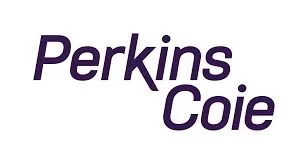- in United States
- with readers working within the Retail & Leisure industries
- with readers working within the Retail & Leisure industries
- within Transport topic(s)
Key Takeaways
- A recently proposed rule expands the ability of uncrewed aircraft system operators to conduct beyond visual line of sight operations.
- The rule introduces operational requirements for BVLOS operations and a novel structure for operations personnel, all to ensure safety.
- A new airworthiness acceptance process for UAS based on industry consensus standards replaces traditional airworthiness certificates, simplifying FAA approval.
On August 7, 2025, the Federal Aviation Administration (FAA), along with the U.S. Department of Transportation, U.S. Transportation Security Administration, and U.S. Department of Homeland Security, published a notice of proposed rulemaking (NPRM) that is poised to reshape the regulatory landscape for commercial drone operations in the United States. 90 Fed. Reg. 38212. By easing existing restrictions on beyond visual line of sight (BVLOS) operations for uncrewed aircraft systems (UAS), the NPRM aims to provide a predictable regulatory pathway for safe, routine, and scalable low-altitude BLVOS UAS operations, unlocking expanded commercial uses in logistics, agriculture, energy production, infrastructure inspection, and package delivery.
The FAA has long been tasked with ensuring the safe integration of UAS into the national airspace. Under the FAA Modernization and Reform Act of 2012, the agency was directed to establish rules and standards for UAS operations, with a focus on safety and minimizing risks to the public and other airspace users. Current regulations, such as those under Part 107, generally limit UAS operations to within the visual line of sight of the operator. That limitation has constrained the options for UAS applications.
The NPRM seeks to address current limits on UAS use cases by establishing a regulatory framework for BVLOS operations. To do so, the NPRM proposes a broad range of new rules. At 180 pages in length, the NPRM cannot be succinctly summarized. But here are a few highlights:
Operational flexibility. By creating a standardized regulatory framework for drone operators to conduct BVLOS operations, the NPRM removes the existing requirement for operators to obtain individual waivers or exemptions to operate BVLOS. Instead, the NPRM allows UAS to operate BVLOS at an altitude of 400 feet or less subject to compliance with new safety protocols. For example, operators would be required to secure FAA approval for intended flight areas; flight boundaries; daily operation estimates; and takeoff, landing, and loading zones.
Certification standards. Traditional FAA airworthiness certificates are not required under the NPRM; instead, a new process is established for airworthiness acceptance. Airworthiness acceptance would require that the UAS meet performance-based design, production, and airworthiness requirements using a means of compliance that is based on industry consensus standards. This is expected to streamline the approval process.
Authorizations. Instead of proposing a one-size-fits-all approach, the NPRM creates two avenues for operators to conduct operations under the new Part 108: an operating permit and operating certificate. Which approach the operator takes will depend on the risk associated with the proposed operation. Permits would be available for lower-risk operations in less population-dense areas. Operating certificates would be required for operators using larger UAS or operations involving more UAS.
Operator responsibility. Unlike under Part 107, the NPRM does not contain a remote pilot or airman certification requirement. Instead, the operations supervisor would be responsible for overall safety and security by ensuring all operations meet the regulatory requirements and operating limitations that apply to the aircraft. In addition, the operations supervisor is responsible for ensuring all personnel are properly trained and knowledgeable about the applicable regulations.
Size. The NPRM would allow aircraft to weigh up to 1,320 pounds, including all cargo. This is significantly larger than aircraft allowed under Part 107, which currently imposes a 55-pound weight limit. There are three proposed weight categories in the NPRM for various operational activities and authorization levels.
Moving Forward
The NPRM represents a significant step toward integrating UAS into the national airspace. As the preamble of the NPRM stresses, the proposal has the potential to unlock significant economic and operational benefits for industries relying on UAS technology. However, stakeholders will need to adapt to new compliance requirements to take advantage of the rule.
The FAA is accepting public comments on the NPRM until October 6, 2025.
The content of this article is intended to provide a general guide to the subject matter. Specialist advice should be sought about your specific circumstances.




